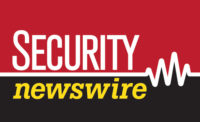The FBI says today that cyber criminals have stepped up their efforts to steal money and gain access to banks and other financial institutions using spam, phishing emails, keystroke loggers and Remote Access Trojans (RAT), according to an article from Network World.
Specifically, the fraudsters are looking to compromise financial institution networks and obtain employee login credentials, the Network World article reports. The stolen credentials are used to initiate unauthorized wire transfers overseas; amounts have varied between $400,000 and $900,000, and, in at least one case, the criminals raised the wire transfer limit on the customer's account to allow for a larger transfer. In most of the identified wire transfer failures, the perpetrators were only unsuccessful because they entered the intended account information incorrectly, the FBI states.
In the bank fraud, the FBI says cyber criminals "used spam and phishing e-mails to target their victims. Once compromised, keyloggers and RATs installed on the financial institution employee's computer provided the attackers with complete access to internal networks and logins to third party systems. Variants of Zeus malware were used to steal the employee's credentials in a few reported incidents. In some instances, the [attackers] stole multiple employee credentials or administrative credentials to third party services and were able to circumvent authentication methods used by the financial institution(s) to deter fraudulent activity. This allowed the intruders to handle all aspects of a wire transaction, including the approval. The unauthorized transactions were preceded by unauthorized logins that occurred outside of normal business hours using the stolen financial institution employees' credentials. In at least one instance, attackers browsed through multiple accounts, apparently selecting the accounts with the largest balance."
According to the article, the FBI made a number of recommendations for financial institutions to help prevent security problems:
- Educate employees on the dangers associated with opening attachments or clicking on links in unsolicited emails.
- Do not allow employees to access personal or work emails on the same computers used to initiate payments.
- Do not allow employees to access the Internet freely on the same computers used to initiate payments.
- Do not allow employees to access administrative accounts from home computers or laptops connected to home networks.
- Ensure employees do not leave USB tokens in computers used to connect to payment systems.
- Review anti-malware defenses and ensure the use of reputation based content and website access filters.
- Ensure that workstations utilize host-based IPS technology and/or application whitelisting to prevent the execution of unauthorized programs.
- Monitor employee logins that occur outside of normal business hours.
- Consider implementing time-of-day login restrictions for the employee accounts with access to payment systems.
- Restrict access to wire transfer limit settings.
- Reduce employee wire limits in automated wire systems to require a second employee to approve larger wire transfers.
- If wire transfer anomaly detection systems are used, consider changing "rules" to detect this type of attack and, if possible, create alerts to notify bank administrators if wire transfer limits are modified.
- Secure and/or store manuals offline or restrict access to the training system manuals with further security, such as enhanced access controls and/or segregation from the payment systems themselves.
- Monitor for spikes in website traffic that may indicate the beginning of a DDoS and implement a plan to ensure that when potential DDoS activity is detected, the appropriate authorities handling wire transfers are notified so wire transfer requests will be more closely scrutinized.
- Strongly consider implementing an out of band authorization prior to allowing wire transfers to execute.
- Limit systems from which credentials used for wire authorization can be utilized.






